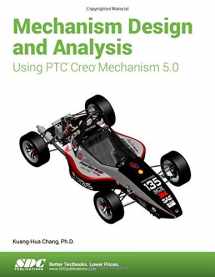
Mechanism Design and Analysis Using PTC Creo Mechanism 5.0
Book details
Summary
Description
Mechanism Design and Analysis Using PTC Creo Mechanism 5.0 is designed to help you become familiar with Mechanism, a module of the PTC Creo Parametric software family, which supports modeling and analysis (or simulation) of mechanisms in a virtual (computer) environment.
Capabilities in Mechanism allow users to simulate and visualize mechanism performance. Using Mechanism early in the product development stage could prevent costly redesign due to design defects found in the physical testing phase; therefore, it contributes to a more cost effective, reliable, and efficient product development process.
The book is written following a project-based learning approach and covers the major concepts and frequently used commands required to advance readers from a novice to an intermediate level. Basic concepts discussed include model creation, such as body and joint definitions; analysis type selection, such as static (assembly) analysis, kinematics and dynamics; and results visualization. The concepts are introduced using simple, yet realistic, examples.


We would LOVE it if you could help us and other readers by reviewing the book
Book review



